
The Basics of Motion Design in Events
Engaging Audiences with Motion: The Role of Design and Motion Graphics
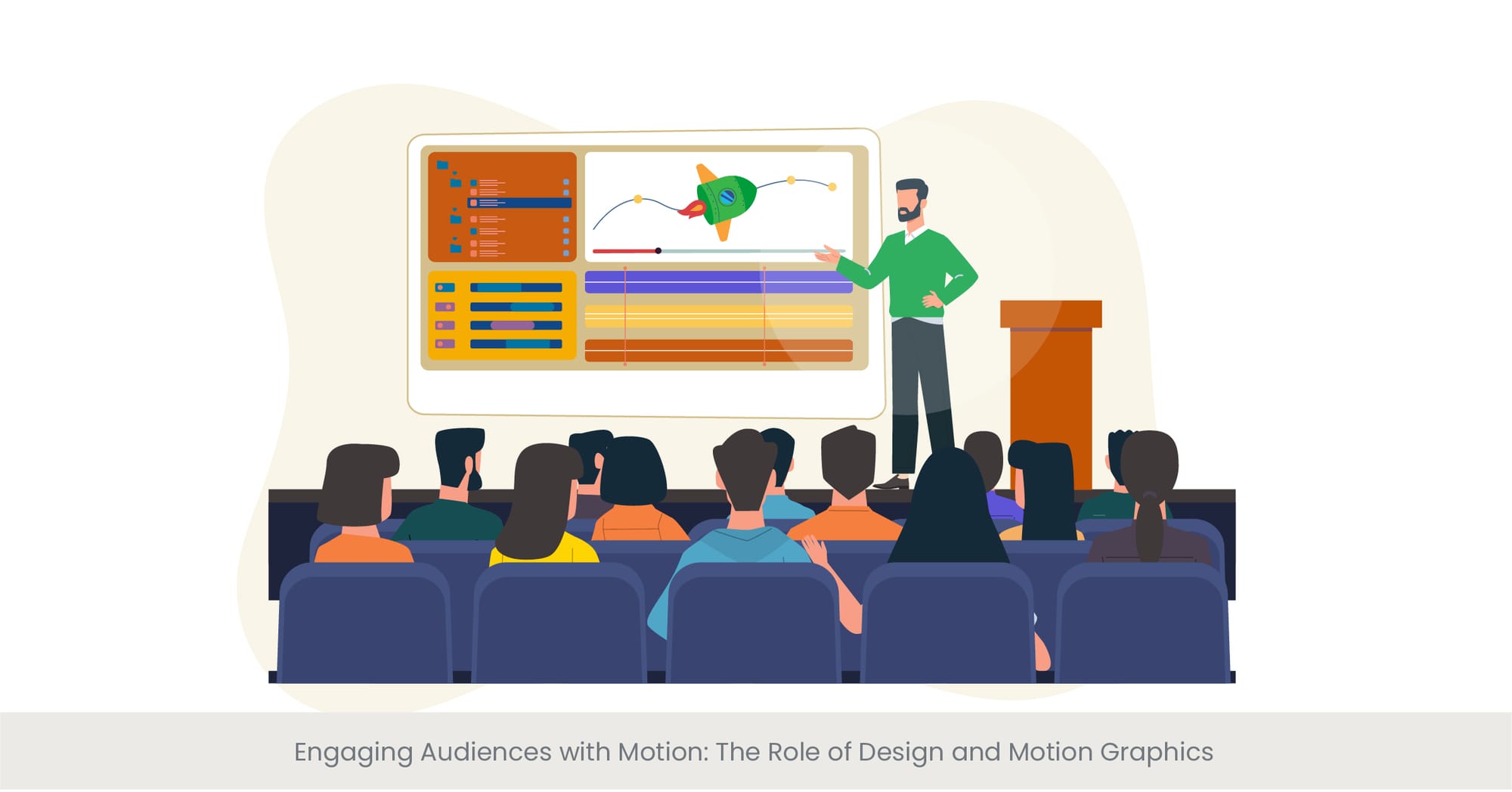
In the dynamic world of event planning and presentation, the integration of design and motion graphics plays a pivotal role in captivating and engaging audiences. Motion design, a creative process that combines graphic design with animation, breathes life into static elements, transforming them into visually compelling narratives. This foundational aspect of event, called motion design, is not just about embellishing presentations with animations; it's about creating an immersive experience that resonates with attendees. By employing motion graphics, event organizers can convey complex messages in an accessible and appealing manner, ensuring that the core message is not only seen but felt by the audience.
A Historical Perspective: Evolution of Motion Graphics in Events
The journey of motion graphics from television and film to the heart of event presentations is a testament to its transformative power. Initially used for title sequences and advertisements, motion graphics have evolved into a sophisticated tool for storytelling and branding. This evolution has been driven by advances in technology and a deeper understanding of visual communication. Motion design's ability to merge art and technology has made it an indispensable element in creating engaging event experiences. It transcends traditional barriers of language and culture, making it a universal medium for storytelling.
Real-World Applications: Motion Design Transforming Events
From corporate conferences to music festivals, motion graphics are revolutionizing the way events are designed and experienced. One notable example is the use of large-scale projections and LED displays to create immersive environments that transport attendees to another world. These technologies, powered by motion design, can turn a conventional space into a captivating visual spectacle. Interactive installations, where attendees' movements influence the on-screen graphics, are another example of how motion design can enhance audience engagement. These applications not only entertain but also foster a deeper connection between the event's theme and its participants.
Validating the Visuals: The Impact of Motion Design on Events
The efficacy of motion and other graphic design elements in events is supported by numerous studies and expert opinions. For instance, research indicates that presentations incorporating motion graphics significantly increase audience engagement and information retention. According to a report by the Event Marketing Institute, events that feature dynamic visual elements like motion graphics see a higher attendee satisfaction rate compared to those that do not. These findings underscore the importance of integrating motion design into event planning as a strategy to captivate and communicate effectively with audiences.
This section has laid the foundation for understanding the significance of motion design in events, highlighting its historical evolution, real-world applications, and the empirical evidence supporting its effectiveness. As we delve deeper into the subsequent sections, we will explore how motion graphics can be leveraged for enhanced storytelling, the latest trends in event animation, and much more, ensuring a comprehensive guide to animating your event design for dynamic presentations.
Incorporating Motion Graphics for Enhanced Storytelling
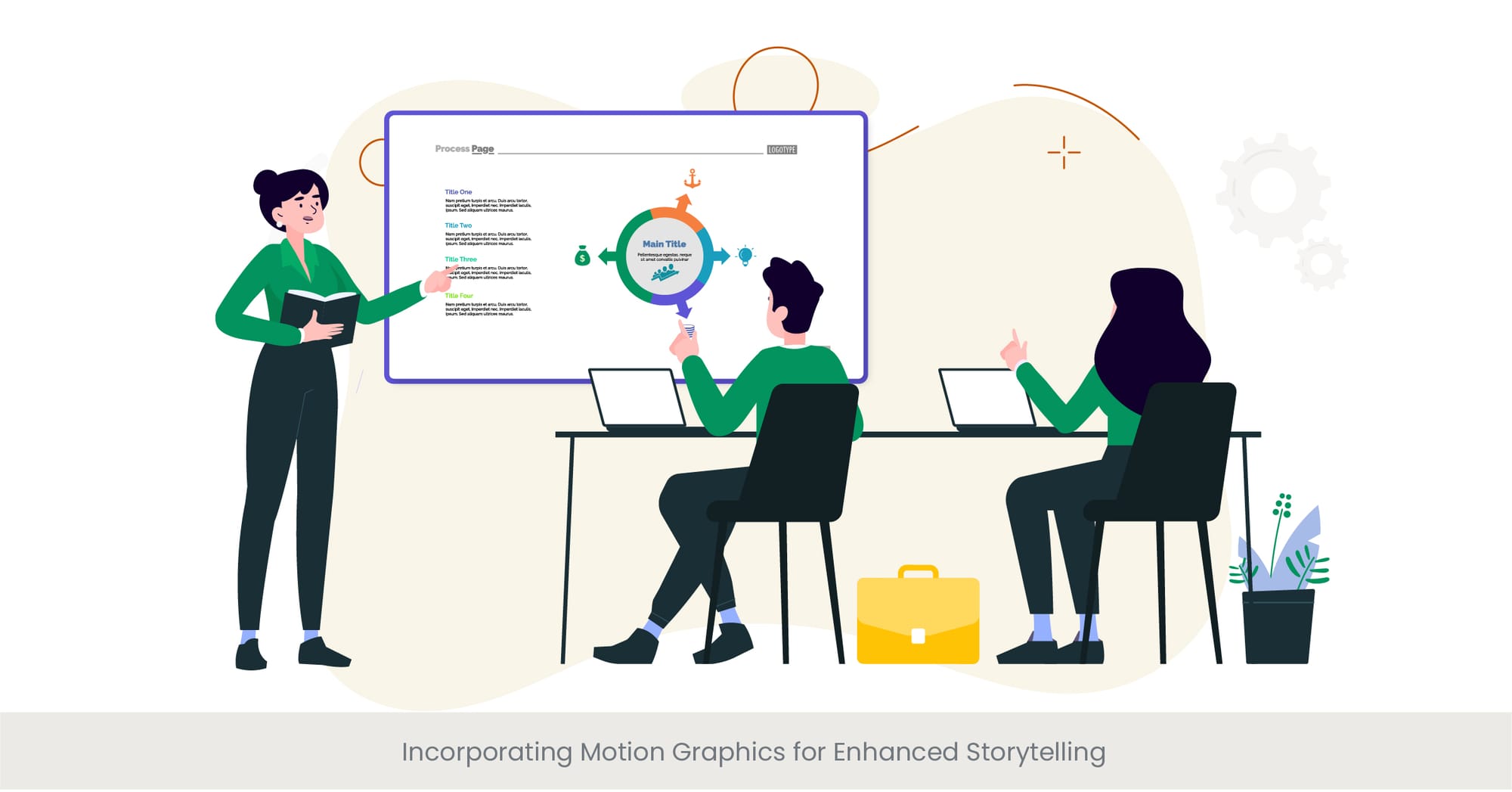
Crafting Compelling Narratives with Motion Graphics
Storytelling is an art that connects people, evokes emotions, and conveys messages in memorable ways. In the realm of event design, incorporating motion graphics into storytelling can transform an ordinary presentation into an extraordinary journey. Motion graphics designers wield the power to craft compelling narratives that captivate audiences, using a blend of visual elements, sound, and animation. This multidimensional approach to storytelling enriches the audience's experience, making the narrative more engaging and impactful. By weaving motion graphics into the fabric of event storytelling, designers can create immersive stories that resonate on a deeper emotional level.
The Evolution of Storytelling in Events
The shift towards more interactive and visually engaging storytelling methods in events has been significant. Historically, event storytelling relied heavily on verbal and written content, which, while effective, had limitations in terms of engagement and memorability. The introduction of motion graphics has revolutionized this aspect, allowing for the creation of dynamic, visual stories that complement the spoken word. This evolution reflects a broader trend in digital communication, where visual content is increasingly prioritized to capture attention in a saturated media landscape. Motion graphics offer a fresh, innovative way to tell stories, making them an essential tool for modern event designers.
Illuminating Stories: Real-World Examples
Numerous events have successfully leveraged motion graphics to enhance their storytelling. For instance, product launches often use motion graphics to demonstrate the features and benefits of a new product in a way that is both informative and entertaining. Another example can be seen in charity events, where motion graphics are used to tell the stories of those in need, creating a powerful emotional appeal to donors. These examples illustrate how motion graphics can be adapted to various contexts, adding depth and dimension to event narratives.
The Proven Impact of Visual Storytelling
The impact of incorporating motion graphics into event storytelling is not just anecdotal; it's backed by research. Studies have shown that visual content significantly increases the retention of information and emotional impact compared to text alone. A report by the Social Science Research Network highlights that 65% of people are visual learners, underscoring the importance of visual aids in communication. Furthermore, events that feature engaging visual stories have been shown to achieve higher audience satisfaction and greater impact, demonstrating the value of motion graphics in creating memorable and effective event experiences.
This exploration of motion graphics as a tool for enhanced storytelling underscores its importance in creating engaging, memorable event experiences. By harnessing the power of visual narrative, event designers can elevate their presentations, making them not just seen, but felt by the audience.
Looking to elevate your presentations? Contact us to get started today.
Trends in Animation for Event Design
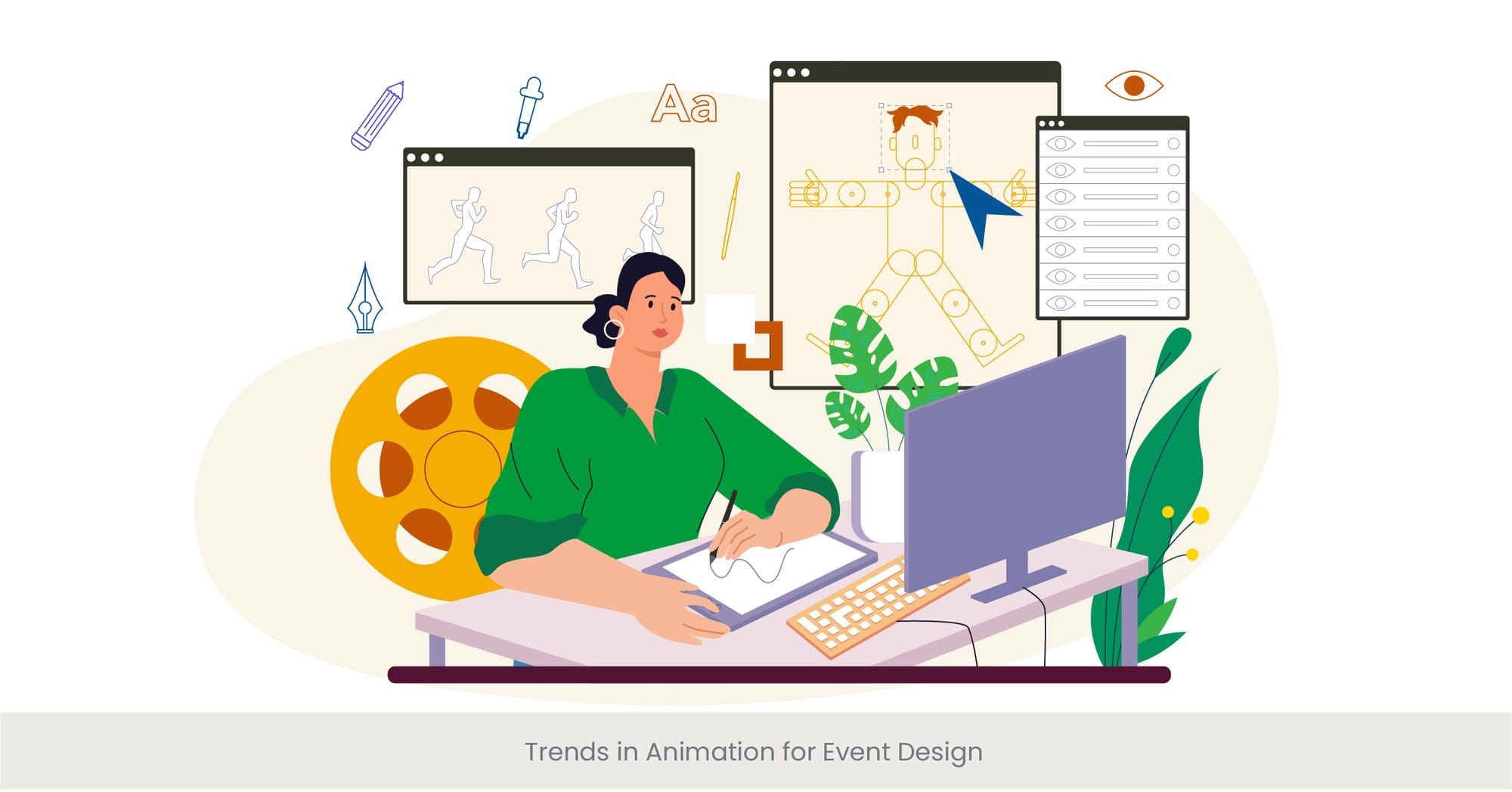
Navigating the New Wave of Animation Trends
The dynamic field of event design is continually influenced by evolving trends in animation, with each year bringing new creative possibilities. Currently, we're seeing a shift towards more immersive, interactive animations that not only captivate visually but also encourage audience participation. From augmented reality (AR) experiences that overlay digital information onto the physical world to virtual reality (VR) environments that offer a fully immersive experience, these trends are setting new standards for event engagement. Additionally, the use of 3D animation has grown, providing a depth of field that transforms flat screens into gateways to new worlds. These trends not only enhance the aesthetic appeal of events but also open up new avenues for storytelling and audience interaction.
The Evolution of Animation in Event Design
The trajectory of animation within event design has mirrored technological advancements and changing audience expectations. In the past, animation was often used sparingly, mainly for introductions or special segments. Today, it has become an integral part of the event experience, with designers pushing the boundaries of what's possible. The adoption of cutting-edge technologies, such as real-time animation and interactive motion graphics, reflects a broader trend towards more personalized and engaging event experiences. This evolution from static presentations to dynamic, animated environments marks a significant shift in how events are conceptualized and executed.
When organizing a multi-city event, it is essential to tailor presentations that resonate with audiences across various locations. Multi-city event presentations require careful planning to ensure consistent branding and messaging. Technology such as live streaming, audience interaction tools, and adaptable content ensures that your presentation is effective, no matter the city.
Explore our case studies to see how we’ve handled multi-city events.
Spotlight on Success: Cutting-edge Examples
Innovative use of animation in events can be seen in a variety of cases. For example, conferences and trade shows are increasingly incorporating interactive floor projections that respond to attendees' movements, creating a lively and engaging atmosphere. Music festivals, too, are harnessing the power of animation to create breathtaking stage visuals that enhance the performance and create a memorable experience for attendees. Another notable trend is the use of holographic technology, bringing speakers or performers to life in 3D form, even if they are not physically present. These examples showcase how animation can transform the event space, making it more dynamic and engaging.
Empirical Evidence: The Impact of Animation Trends
The effectiveness of these animation trends in enhancing event experiences is supported by research and feedback from event attendees. Studies have shown that events incorporating interactive and immersive animations see a notable increase in attendee engagement and satisfaction. A survey conducted by EventMB found that 73% of event planners believe incorporating tech trends like VR and AR in their events creates a more engaging experience for attendees. Furthermore, the visual appeal of 3D animations and holograms has been shown to significantly increase brand recall and message retention among audiences. This data underscores the importance of staying abreast of animation trends in creating successful, impactful events.
This section has illuminated the latest trends in animation for event design, showcasing how they contribute to creating more immersive, engaging, and memorable event experiences. As we delve into the technical aspects in the next section, "Tools and Software for Creating Motion Graphics," we will explore the practicalities of bringing these trends to life.
Tools and Software for Creating Motion Graphics
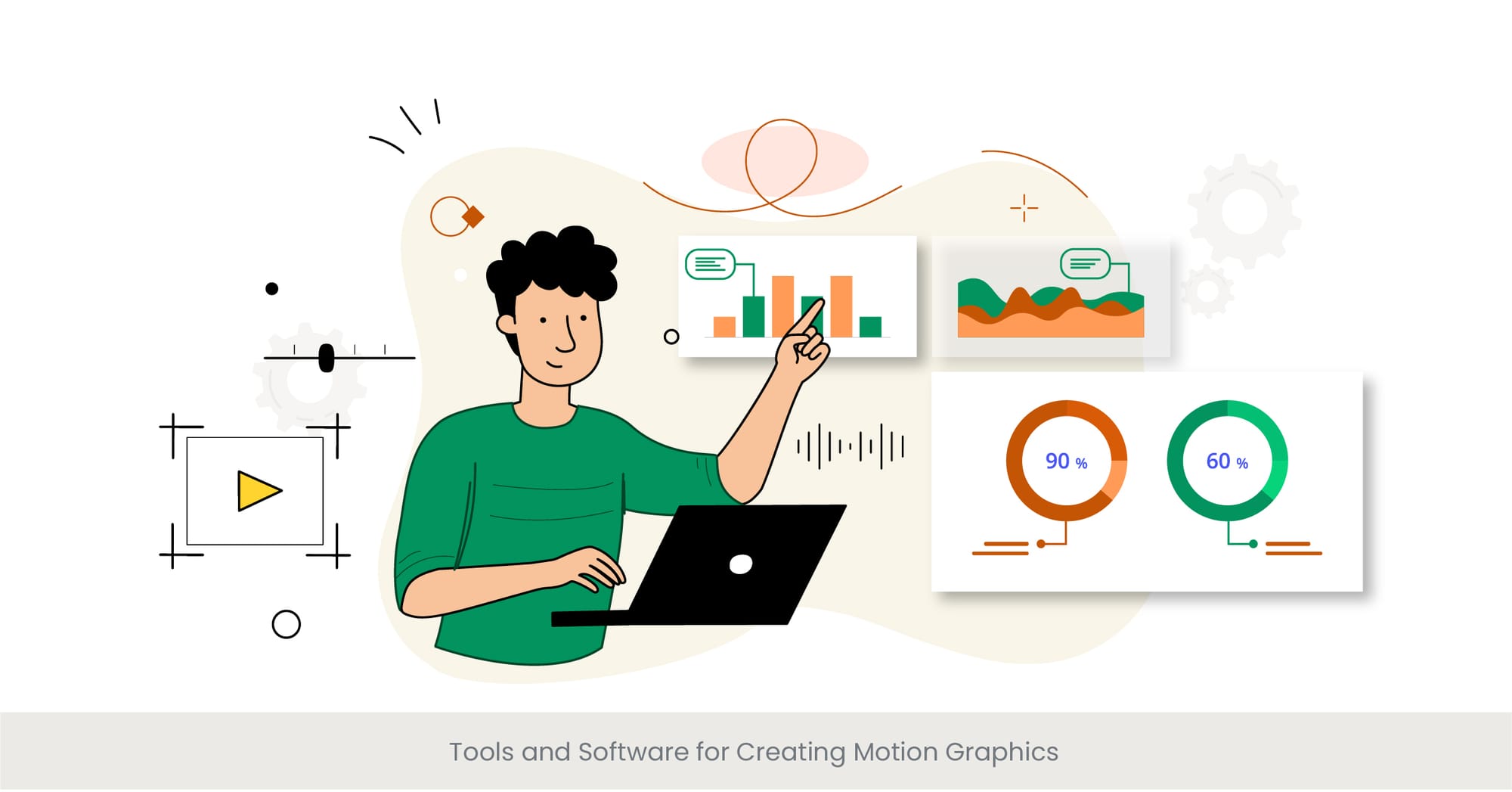
Essential Tools for Motion Graphic Designers
In the realm of event design, the choice of software plays a critical role in shaping the final output. Leading the pack in motion graphics creation are Adobe After Effects and Cinema 4D, renowned for their comprehensive toolsets that cater to a wide range of animation techniques, from simple text animations to complex 3D models. Adobe After Effects is particularly favored for its versatility and integration with other Adobe Suite applications, making it a staple in the most motion graphics designer's toolkit. Cinema 4D is celebrated for its powerful 3D capabilities, enabling designers to create intricate visuals with depth and realism. Together, these tools offer a robust foundation for crafting motion graphics that can elevate any event.
Navigating the Software Landscape: A Comparative Overview
While Adobe After Effects and Cinema 4D dominate the landscape many motion graphics designers, the market is rich with alternatives catering to different needs and skill levels. For instance, Blender offers a free, open-source solution for 3D animation, appealing to designers on a budget or those supporting open-source communities. On the other end of the spectrum, Autodesk Maya serves as the gold standard for professional 3D animation, used in high-end productions and complex animations. Each software brings its unique strengths to the table, from user-friendly interfaces to specialized features, allowing motion graphics designers to select the tools that best match their project requirements and expertise level.
A product launch event presentation should captivate and inform the audience while reflecting the excitement around your new offering. By combining storytelling with sleek visuals, you can craft a presentation that highlights the product’s unique selling points. Strong visuals, clear messaging, and compelling demos are key to driving enthusiasm and sales.
Need expert help with product launch presentations? Get in touch now.
Bringing Ideas to Life: Software in Action
The practical application of these tools can be seen in various event design projects. Adobe After Effects has been instrumental in creating animated backdrops for conferences, enhancing presentations with dynamic visual elements. Cinema 4D's 3D modeling capabilities have been used to design intricate stage sets that are then projected onto screens, creating illusions of depth and space. These software tools not only facilitate the creation of captivating visuals but also empower designers to push the boundaries of traditional event design, incorporating elements of interactivity logo animation and immersion.
Validating Choices: The Impact of Software on Design Quality
The effectiveness of motion graphics software is evident in the quality and innovation of event designs. Surveys among graphic and motion designers indicate a strong preference for Adobe After Effects and Cinema 4D, citing their reliability, extensive feature sets, and compatibility with other design tools. Industry reports highlight that events utilizing high-quality motion graphics see increased audience engagement and satisfaction, underscoring the value of investing in professional-grade motion design software. Moreover, the continuous updates and community support surrounding these tools ensure that designers have access to the latest features and resources, enabling them to stay at the forefront of motion graphics trends.
This section has provided a comprehensive overview of the tools and software pivotal for creating motion graphics, underlining their significance in crafting engaging, dynamic video content for events. As we proceed, we will explore the delicate art of "Balancing Animation with Overall Event Design," ensuring that our animated elements harmoniously integrate with the broader event aesthetic.
Balancing Animation with Overall Event Design
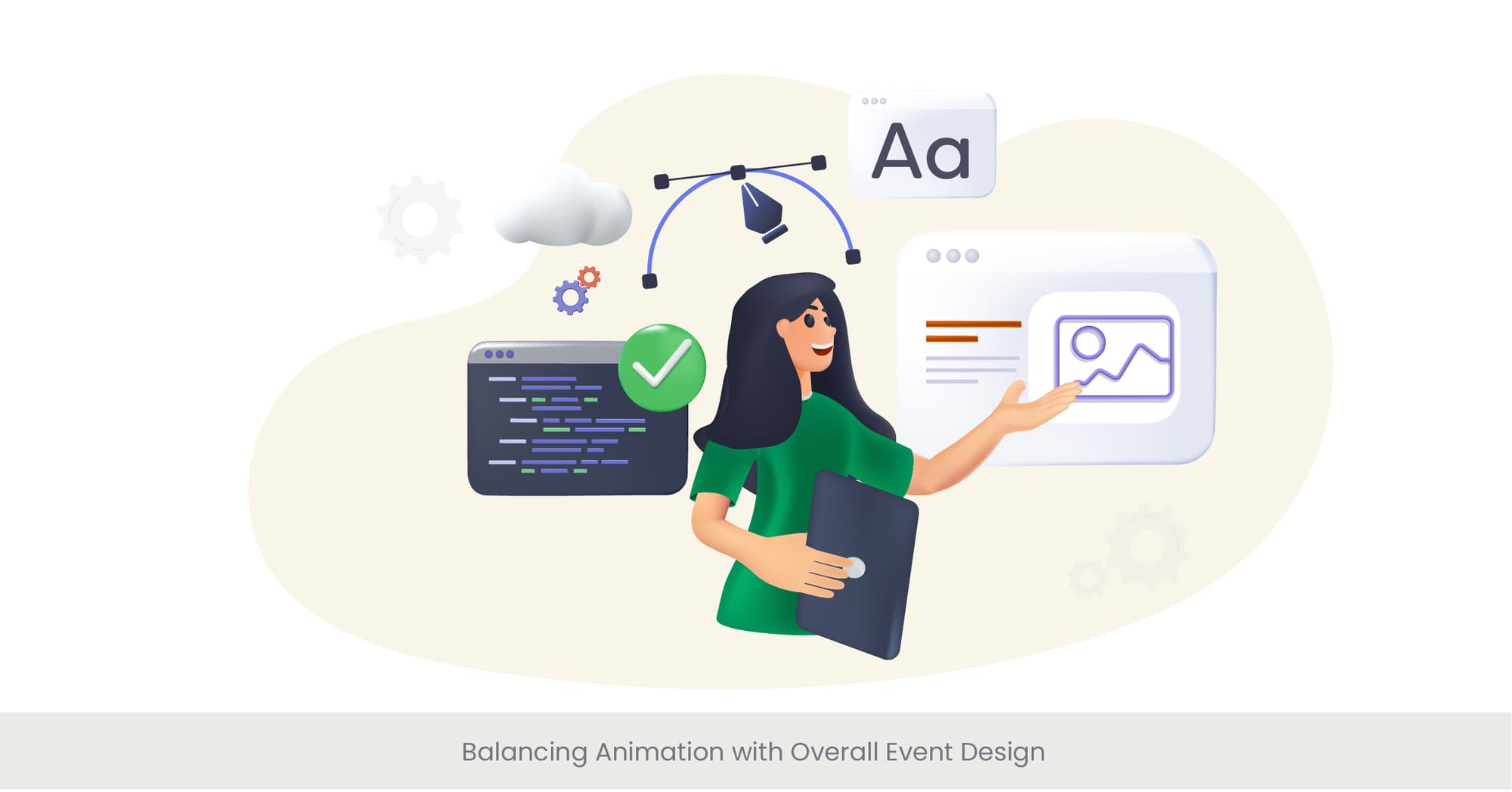
The Art of Harmonious Integration
Achieving a balance between animation and overall event design is akin to conducting an orchestra; every element must play its part in harmony. The use of motion graphics should complement the event's theme, message, and atmosphere, rather than detracting from it. This delicate balance involves considering the scale, color scheme, and pacing of animations to ensure they align with the event's aesthetic and objectives. For instance, a corporate conference might benefit from subtle, professional animations that underscore key points, while a music festival could embrace bold, vibrant animations that echo the energy of the performances. The goal is to create a seamless visual experience that supports the event's narrative and engages the audience without overwhelming them.
Understanding the Audience and Context
A critical factor in balancing animation with event design is understanding the audience and the context of the event. Different demographics may have varying preferences and tolerances for animated content. For example, a younger audience at a tech product launch might appreciate cutting-edge, interactive animations, while attendees of a more formal gala might prefer understated, elegant motion graphics. Additionally, the physical setting and format of the event—whether it's in-person, virtual, or hybrid—can influence how animations are best utilized. Tailoring the motion graphics to fit the audience's expectations and the event's context is key to enhancing the overall experience.
Case Studies: Successful Integration of Animation
Real-world examples of successful integration abound, highlighting the transformative potential of well-balanced motion graphics in events. One notable case involved a global tech conference that used augmented reality animations to bring keynote speeches to life, adding a layer of interactivity without distracting from the speakers' messages. Another example is an art exhibition that incorporated subtle motion graphics to guide visitors through the displays, enriching the narrative without overshadowing the artworks. These cases demonstrate how thoughtful application of animation can elevate the event experience, creating memorable moments that resonate with attendees.
Expert Insights: Achieving Visual Harmony
Industry experts emphasize the importance of collaboration between graphic and motion designers, event planners, and other stakeholders to achieve visual harmony. This collaborative approach ensures that animations are thoughtfully integrated into the overall design, contributing to a cohesive event experience. Furthermore, feedback from attendees and continuous refinement based on this input can help fine-tune the balance, ensuring that the animations serve their intended purpose. By prioritizing cohesion and audience engagement, designers can create events that are visually stunning, emotionally resonant, and memorable.
This exploration of balancing animation with overall event design underscores the necessity of thoughtful integration to create a harmonious event experience. As we continue to navigate the complexities of event design, the next section will focus on "Interactive Motion Design for Audience Engagement," delving into how interactive elements can further enhance the connection between the event and its participants.
Interactive Motion Design for Audience Engagement
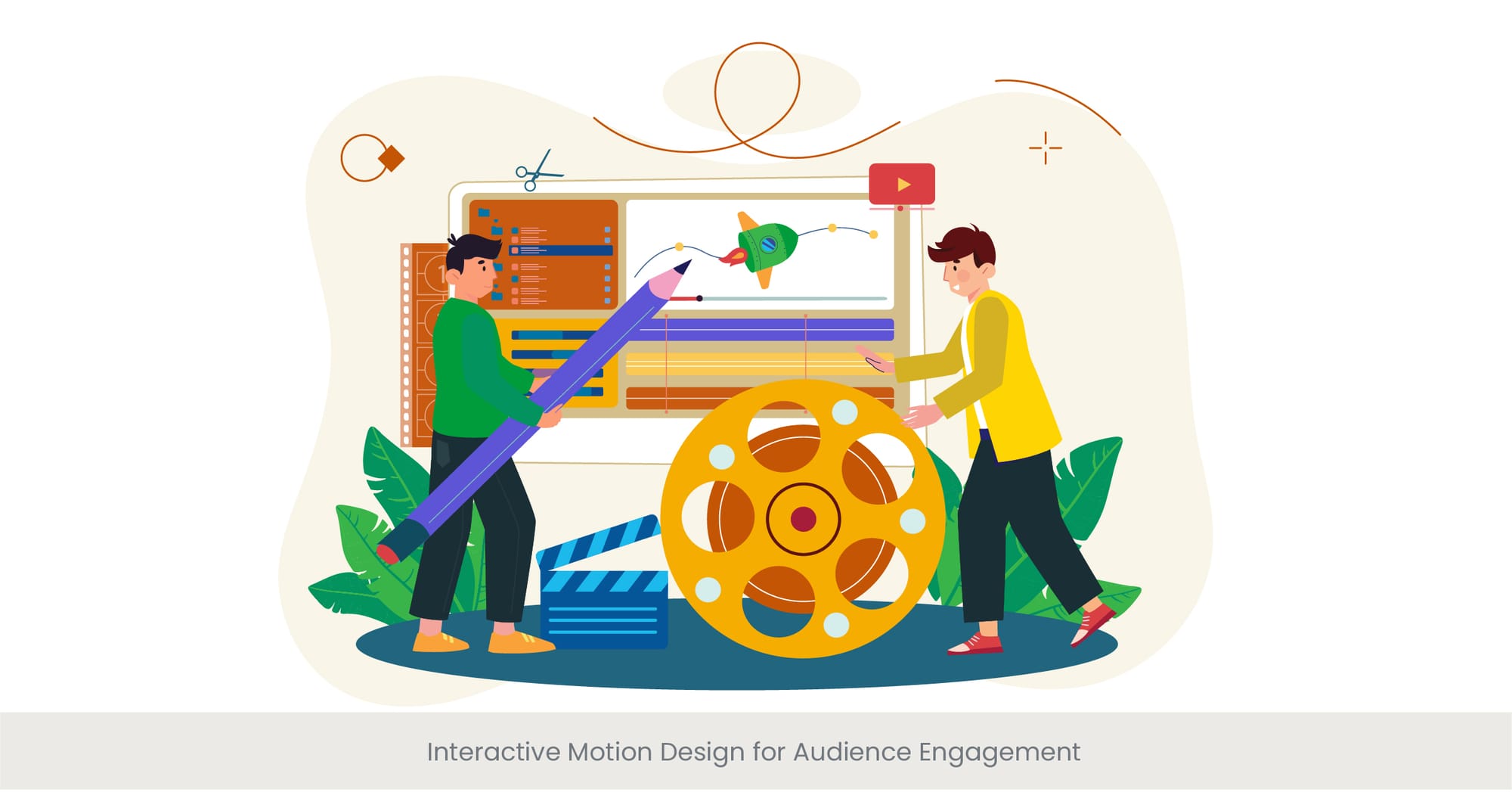
Engaging Through Interaction
Interactive motion design represents a paradigm shift in event engagement, turning static experiences into dynamic interactions. By integrating motion graphics that respond to audience input—be it through touch screens, mobile devices, or physical movements—events can offer personalized experiences that captivate and involve the audience directly. This approach not only heightens interest but also fosters a sense of connection and immersion, as participants see their actions influence the event environment. From interactive polls displayed in real-time to gesture-controlled visual effects during performances, interactive motion design opens up new avenues for creativity and engagement.
The Psychology Behind Interaction
The effectiveness of interactive motion design in engaging audiences is deeply rooted in psychological principles. Human beings are naturally drawn to experiences that offer a sense of agency and involvement. When attendees can interact with the event through motion graphics, it triggers a more profound cognitive and emotional response, enhancing their overall experience. This engagement is not just about the novelty of interaction; it's about creating a dialogue between the event and its participants, where each action taken by an attendee shapes the course of the event, making it a truly personalized experience.
Real-World Applications: Interactive Motion Design in Action
Examples of interactive motion design elevating event experiences abound across various industries. At a fashion show, designers used an interactive runway where the lighting and visual effects changed with the models' movements, creating a dynamic spectacle that amplified the presentation. Another instance saw a conference utilizing an interactive dashboard that allowed attendees to navigate through different sessions and content using gesture controls, making the exploration of topics both intuitive and engaging. These applications showcase the versatility of interactive motion design in creating immersive environments that respond to and evolve with the audience's participation.
Insights and Best Practices for Implementing Interactive Design
Implementing interactive motion design successfully requires a careful balance of technology, creativity, and user experience. Experts in the field recommend starting with a clear understanding of the event's objectives and audience demographics to tailor the interactive elements appropriately. It's also crucial to ensure that the technology used is accessible and intuitive, preventing any barriers to participation. Feedback loops, where attendees' interactions lead to immediate visual or auditory changes, are essential for maintaining engagement and reinforcing the sense of impact. Finally, post-event analysis can provide valuable insights into what worked and what can be improved, helping to refine interactive strategies for future events.
Interactive motion design not only enriches the event experience through engagement but also strengthens the emotional and cognitive connection between the event and its participants. As we progress to the next section, "Motion Graphics as a Tool for Branding," we will explore how motion graphics extend beyond engagement to embody and enhance brand identity within the event space.
Motion Graphics as a Tool for Branding
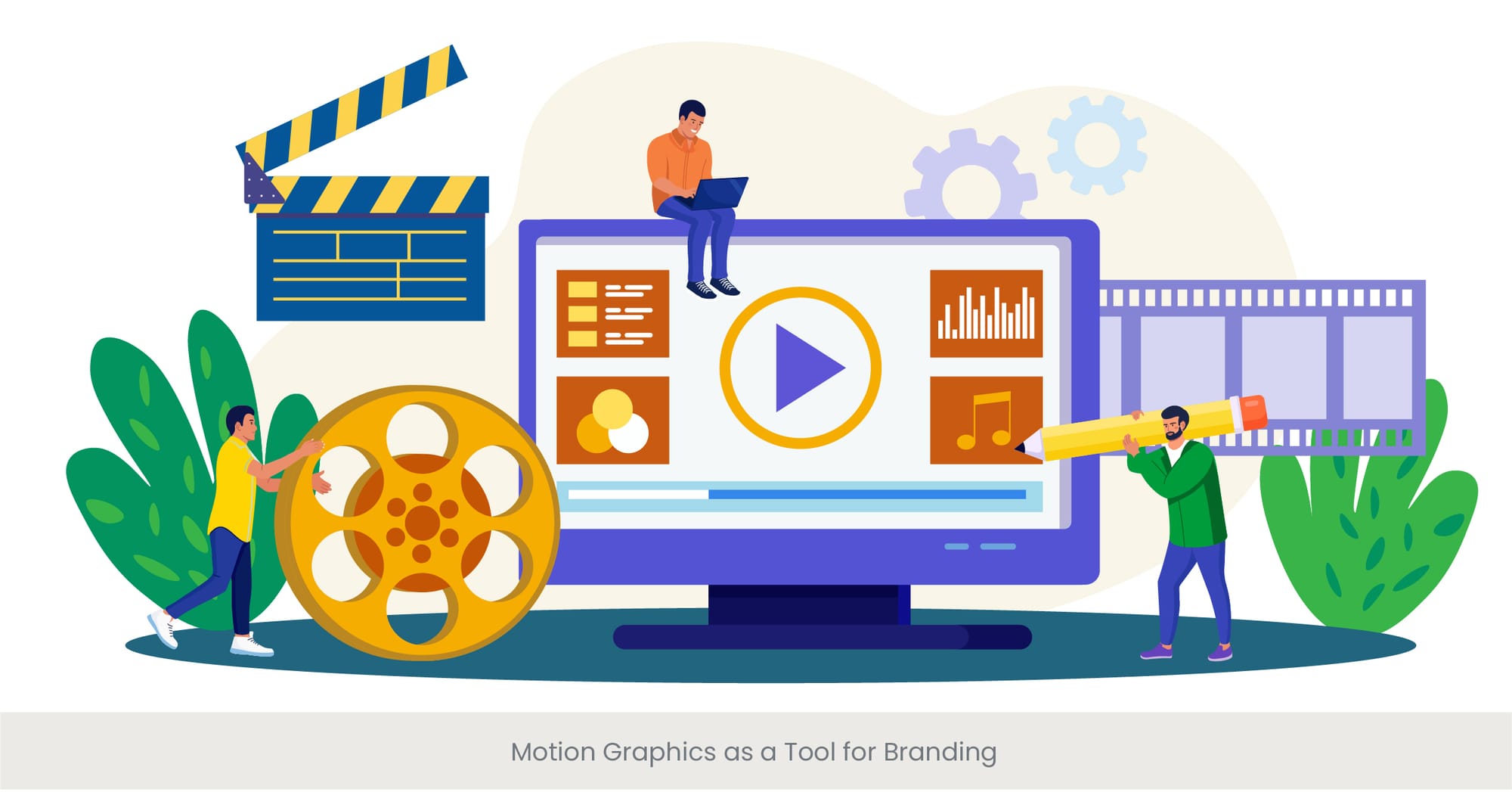
Branding Beyond Logos: The Role of Motion Graphics
In the context of branding, motion graphics transcend traditional logos and static images, offering a dynamic medium to convey a brand's ethos, narrative, and personality. This animated branding approach enables companies to create a memorable brand experience, leveraging promotional motion graphics to illustrate stories, values, and messages that resonate with the audience on an emotional level. Whether it's through animated logos that capture the brand's essence in seconds or through thematic motion graphics that thread through an event, these elements serve as powerful tools for building brand recognition and engagement.
The Evolution of Branding in Events
The integration of motion graphics into branding strategies marks a significant evolution from conventional methods. In an era where digital content is king, static images alone no longer suffice to capture the audience's attention amidst the noise. Motion graphics offer a dynamic alternative that can break through the clutter, providing an immersive brand experience. This shift towards animated branding reflects a broader trend towards experiential marketing, where the focus is on creating engaging, memorable interactions with the brand. By incorporating motion graphics into events, brands can leave a lasting impression on their audience, transforming passive viewers into active participants in the brand story.
Showcasing Success: Motion Graphics Elevating Brands
Real-world examples of brands successfully leveraging motion graphics for branding are plentiful. A notable case is a tech company that unveiled its new product line through a series of animated sequences that highlighted the features and benefits, making a complex product accessible and exciting. Another example is a charity organization that used emotive motion graphics to tell the stories of those it helps, connecting with the audience on a deeper level and driving engagement. These instances illustrate how motion graphics can be utilized not just for aesthetic appeal but as strategic tools for storytelling and brand reinforcement.
Expert Strategies for Motion Graphics Branding
For brands looking to harness motion graphics effectively, the key lies in consistency and alignment with the brand identity. Experts advise developing a coherent visual language that extends across all animated elements, ensuring that motion graphics reflect the brand's core values and messaging. This involves careful selection of colors, typography, and imagery, as well as considering the tone and pacing of animations. Additionally, incorporating feedback mechanisms to gauge audience reactions called motion graphics can help refine and tailor the branding approach, ensuring that the motion graphics resonate with the target demographic.
Motion graphics emerge as a potent branding tool within the event design landscape, offering innovative ways to communicate and connect with audiences. As we progress into the next section, "Creating Cohesive Design Elements Across Media," we will explore how to maintain a consistent visual and thematic narrative across various platforms and mediums, ensuring a unified brand experience.
Event showcase presentations are perfect for exhibitions and trade shows where showcasing a product or service is the primary goal. These presentations focus on high-quality visuals and impactful narratives that highlight the features, advantages, and applications of the product or service. The goal is to leave a lasting impression that resonates with potential clients and partners.
Check out our blogs for more insights into successful event showcases.
Creating Cohesive Design Elements Across Media
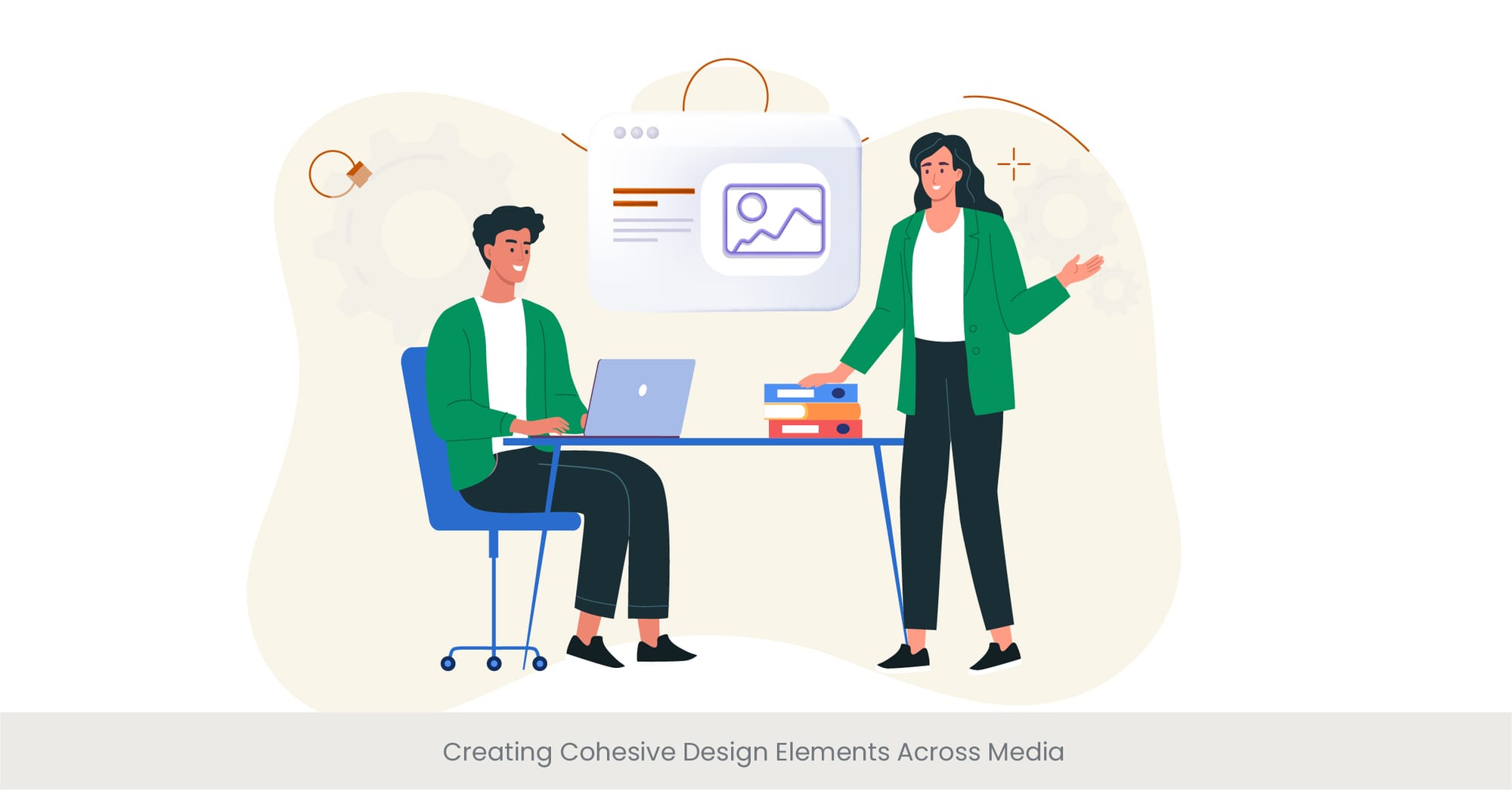
The Pillars of Visual Consistency
The quest for visual consistency in event design involves more than just repeating the same colors or logos across different media; it's about creating a seamless experience that carries the event's essence across every attendee interaction. This coherence is crucial in a world where events often span multiple platforms, from physical venues to digital spaces. By weaving common design and motion graphics elements through invitations, digital signage, social media, and more, organizers can craft a unified narrative that enhances brand recall and strengthens the event's impact.
Bridging the Gap Between Digital and Physical
Achieving cohesion between digital and physical realms presents unique challenges and opportunities. The key lies in leveraging motion graphics as a versatile medium that can adapt to various formats while retaining the core elements of the event's design language. For instance, an animated motif used in event promotions on social media can be echoed in the stage design or interactive installations at the physical venue. This continuity ensures that attendees, whether participating in-person or virtually, experience a consistent brand and event story.
Showcase of Unity: Integrating Design Across Platforms
Successful integration of cohesive design elements is evident in events that seamlessly blend their themes and narratives across all media. One example is a conference that used a distinctive animated sequence as the backdrop for its promotional videos, website, and stage design, creating a recognizable visual theme that resonated with attendees before, during, and after the event. Another instance saw a festival leveraging its motion graphic identity across merchandise, digital ads, and live visuals, reinforcing the event's brand and enhancing the overall attendee experience.
Interactive event presentations engage audiences beyond passive listening, offering opportunities to participate in real-time. Whether through polls, live Q&A sessions, or gamified experiences, interactive presentations drive deeper engagement. Utilizing interactive technologies enhances the event’s experience and makes your audience feel included and valued, resulting in better audience retention and feedback.
Expert Insights on Crafting Cohesive Designs
To achieve a cohesive design across media, event designers and other motion graphics design professionals emphasize the importance of early planning and collaboration among all teams involved. Establishing a clear, comprehensive design guideline that includes color palettes, typography, motion styles, and key graphics can serve as a blueprint for consistency. Furthermore, utilizing tools and software that facilitate design integration across platforms ensures that the visual narrative remains intact, regardless of the medium. Regular reviews and adjustments based on feedback and performance analytics also play a vital role in maintaining a unified design approach.
Creating cohesive design elements across media is paramount in today's multifaceted event landscape. It not only reinforces the event's message and brand identity but also elevates the attendee experience by providing a visually consistent journey across all touchpoints. As we move forward to "Challenges in Motion Design and How to Overcome Them," we will address the common hurdles faced in integrating motion graphics into event designs and strategies to navigate these challenges successfully.
Challenges in Motion Design and How to Overcome Them
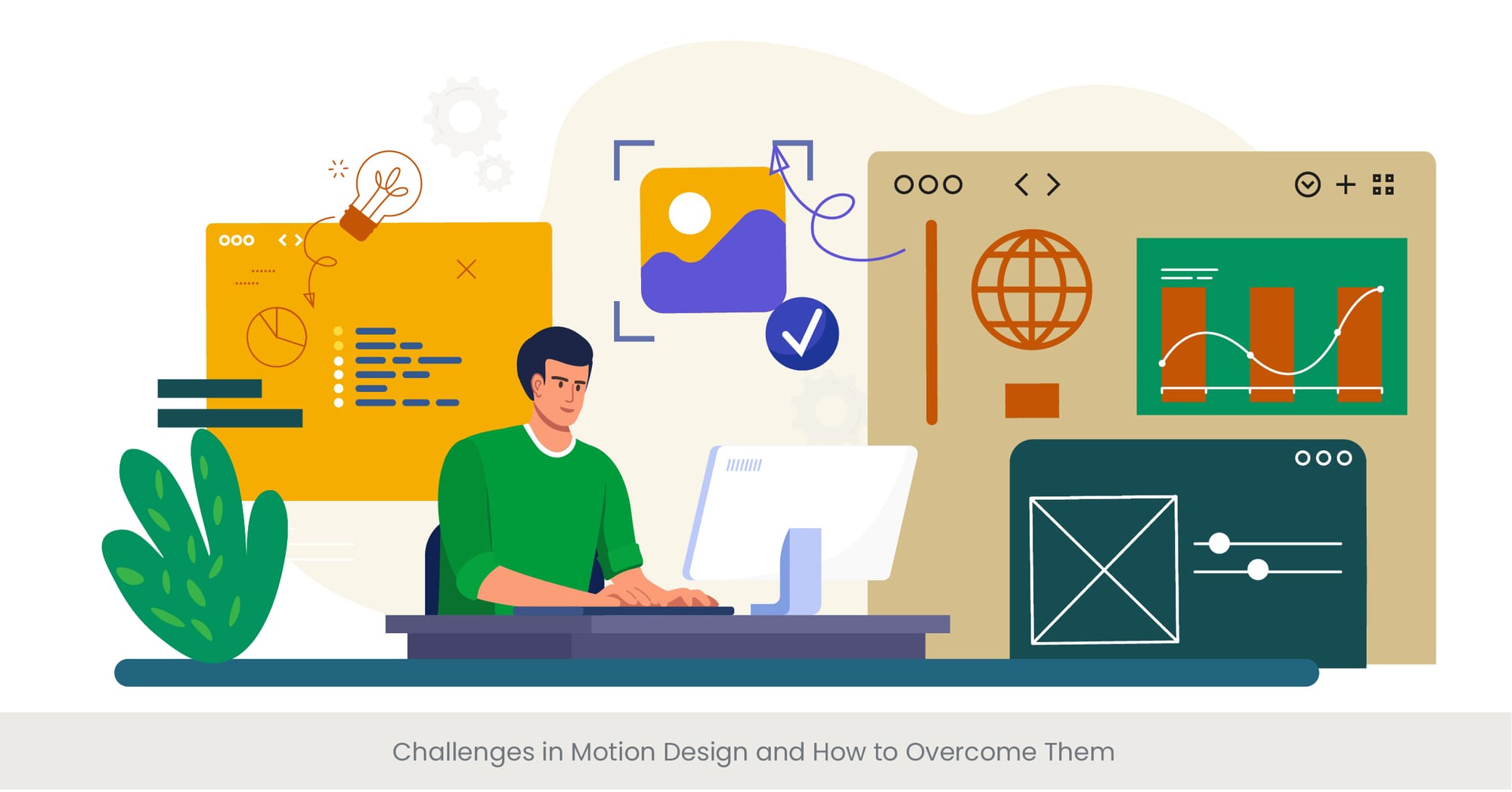
Identifying Common Hurdles
The journey of incorporating motion design into events is fraught with challenges that range from technical difficulties to creative blocks. One prevalent issue is the balancing act between innovative design and practical execution, where ambitious concepts may clash with budgetary constraints or technical limitations. Additionally, ensuring compatibility across various platforms and devices remains a significant concern, given the diverse technological landscapes of venues and attendee preferences. Another common challenge is maintaining the relevance and impact of motion graphics in a fast-paced environment where trends and audience expectations evolve rapidly.
Navigating Technical Limitations and Budget Constraints
Overcoming technical and budgetary challenges requires a blend of creativity, flexibility, and strategic planning. One effective approach is to adopt scalable design solutions that can be adjusted according to available resources, ensuring that the core message and aesthetic are preserved even when modifications are necessary. Leveraging open-source software or exploring cost-effective alternatives to high-end tools can also mitigate budget constraints while still achieving high-quality results. Collaborating with technology partners or sponsors who can provide cutting-edge equipment or software is another avenue to bypass financial and technical barriers.
Ensuring Cross-Platform Compatibility
Achieving seamless motion graphics display across a myriad of devices and platforms is a daunting task that necessitates a thorough understanding of the technical specifications and limitations inherent to each medium. Designers can address compatibility issues by adopting responsive design principles, ensuring that motion graphics are adaptable to different screen sizes and resolutions. Testing content on various devices and platforms throughout the design process helps identify and rectify potential display issues before the event, minimizing the risk of technical glitches that could detract from the attendee experience.
Staying Ahead of Trends and Audience Expectations
To maintain the relevance and appeal of motion graphics in a rapidly changing landscape, continuous learning and adaptation are key. Staying informed about the latest trends in motion design and animation through industry publications, forums, and events can inspire fresh ideas and innovative approaches. Engaging directly with audiences through surveys or feedback mechanisms can also provide valuable insights into their preferences and expectations, guiding the creative process towards more impactful and resonant designs.
Leveraging Success Stories as a Roadmap
Examining successful use cases where motion design has significantly enhanced event experiences can offer practical insights and inspiration. These examples serve as a testament to the power of creative problem-solving and strategic planning in overcoming challenges. By analyzing the strategies employed in these cases, motion designers and event planners can glean lessons on effective resource management, audience engagement, and technological integration that can be applied to their projects.
Facing and overcoming the challenges in motion design necessitates a combination of technical savvy, creative ingenuity, and proactive engagement with both the industry and the audience. As we transition to examining "Successful Use Cases of Motion Design in Events," we will highlight specific instances where motion graphics have been effectively integrated into event designs, serving as illustrative examples of overcoming obstacles and achieving remarkable results.
Successful Use Cases of Motion Design in Events
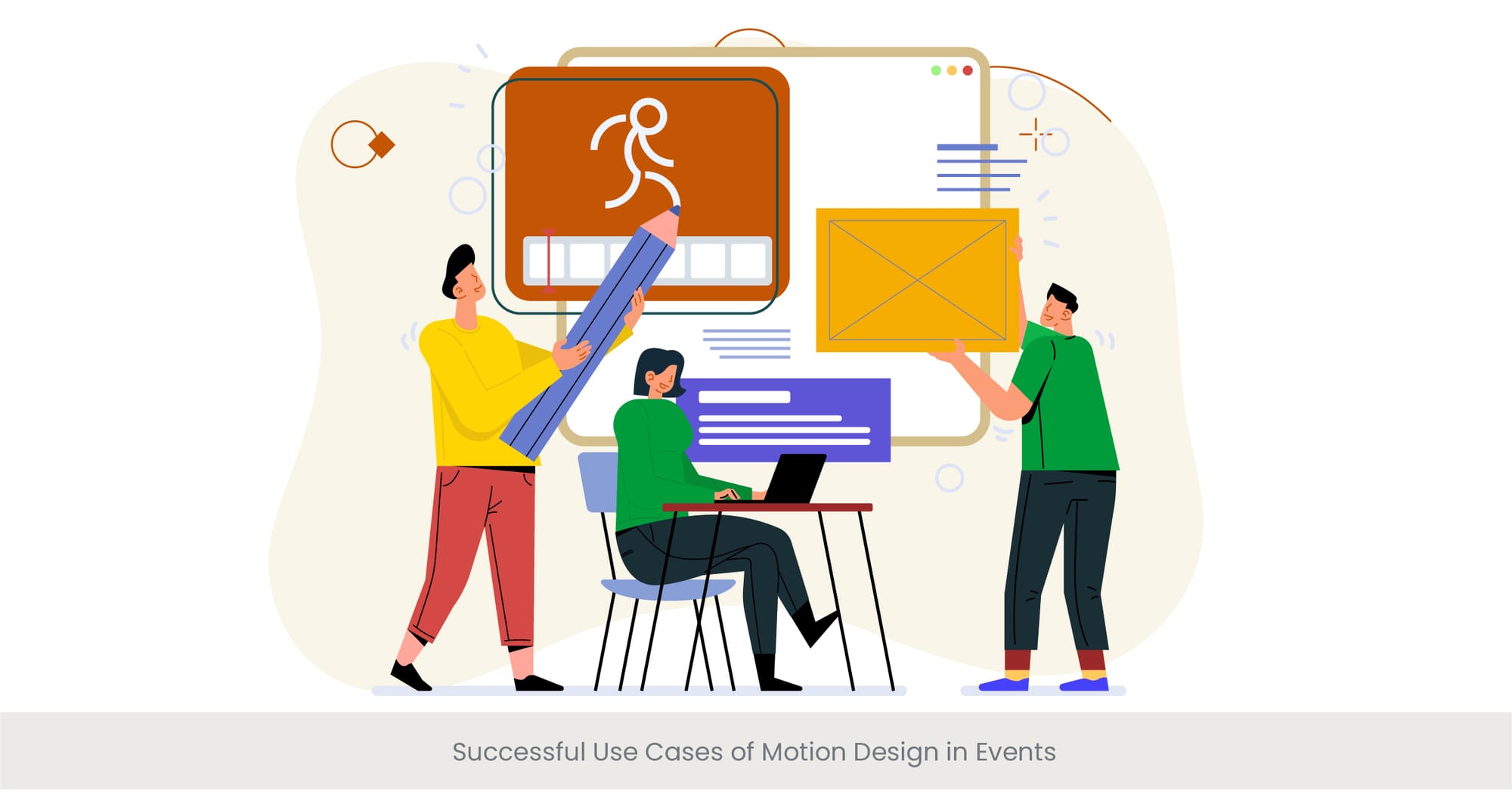
Revolutionizing Conference Experiences
One notable success story is the integration of motion graphics at a major tech conference. The organizers utilized a combination of interactive floor projections and augmented reality presentations to create an immersive learning environment. These motion graphics were tailored to enhance keynote speeches, panel discussions, and product demonstrations, making complex information more accessible and engaging for attendees. The result was a significant increase in attendee engagement and satisfaction, setting a new standard for conference experiences.
Elevating Music Festivals with Dynamic Visuals
At a renowned music festival, motion graphics transformed the stage into a captivating visual spectacle that complemented the live performances. Custom animations synced with the music created an enveloping atmosphere, enhancing the emotional impact of the performances. This innovative use of motion design not only enriched the festival experience but also garnered widespread attention on social media, extending the event's reach and impact.
Enhancing Brand Launches with Animated Storytelling
A global brand utilized motion graphics to launch a new product line, crafting a narrative that highlighted the product's features, benefits, and position within the market. Through animated sequences that combined product visuals with kinetic typography and dynamic data visualizations, the brand was able to convey its message in a compelling, memorable way. This approach not only captured the audience's attention but also facilitated better understanding and retention of the product information.
Interactive Exhibits in Art Galleries
An art gallery redefined the visitor experience by incorporating motion design into its exhibits. Interactive installations allowed visitors to engage with the artwork in new ways, using motion sensors to trigger animations that provided context, background, or an enhanced aesthetic experience. This innovative integration of motion graphics made the art more accessible and engaging, increasing visitor engagement and appreciation.
These successful use cases illustrate the versatility and impact of motion graphics in enhancing event experiences across various domains. By creatively leveraging motion design, event planners and multimedia designers can not only captivate their audiences but also deepen the engagement and understanding of the event's content.
Frequently Asked Questions (FAQs)
What does a motion graphic designer do?
A motion graphic designer creates visually engaging animations and graphics that bring stories and messages to life. In the context of events, they design animated elements that enhance presentations, convey information, and engage audiences, contributing to a memorable event experience.
Is motion graphics the same as graphic design?
While related, motion graphics and graphic design are distinct disciplines. Graphic design focuses on static visual content, whereas motion graphics introduces animation and time-based transitions, creating dynamic visual narratives.
Is motion graphics a tech job?
Yes, a motion graphics designer is considered a tech job as it requires proficiency with specialized software and tools to create animations. Motion graphic designers often have a strong foundation in graphic design principles, coupled with technical skills in animation and digital content creation.
Is motion graphics a good career choice?
Motion graphics is a highly sought-after skill in the digital age, offering diverse opportunities in advertising, film, television, event production, and digital marketing. Its demand across various industries makes it a compelling career choice for those passionate about animation and design.
What is the highest salary for a motion graphic designer?
The salary for a motion graphic designer can vary widely depending on experience, location, and industry. Senior-level motion graphics designers work alone or those working in high-demand areas can command significant salaries, often reaching six figures in markets with a high demand for digital content creation.
Is it hard to become a motion designer?
Becoming a motion designer requires dedication to learning both the artistic and technical aspects of the field. While it can be challenging, passion for design and animation, combined with continuous learning and practice, can lead to a successful career in motion design.
Which is better: graphic design or motion graphics?
The choice between graphic design and motion graphics depends on personal interests and career goals. Graphic design is ideal for those interested in static visual communication, while motion graphics appeals to those passionate about bringing visuals to life through animation.
Can graphic designers do animation?
Many graphic designers expand their skill set to include animation, transitioning into motion graphics. With additional training in animation principles and software, graphic designers can effectively create motion graphics.
What is motion graphic and animation?
"Motion graphic design and animation involve creating moving visuals that can tell stories, convey messages, or provide visual interest. While animation can cover a broad range of styles, including character animation, motion graphics specifically refers to animated graphic design.
What does a motion graphic animator do?
A motion graphic animator creates animated sequences using graphic design elements. They work on projects ranging from promotional videos and advertisements to event visuals and interactive installations, combining design skills with animation techniques.
How much do motion graphics animators make?
The salary of motion graphics animators varies based on experience, location, and the specific industry they work in. Entry-level positions may start with a moderate salary, but experienced animators can earn significantly more, especially in competitive markets.
What is 2D motion graphics?
2D motion graphics involve creating animations in a two-dimensional space, using elements like text, shapes, and illustrations. This style is popular for its versatility and effectiveness in conveying complex information in an accessible way.
Can I teach myself motion graphics?
Yes, with a plethora of online resources, tutorials, and courses available, it's possible to teach yourself motion graphics. A strong foundation in graphic design principles, along with dedication and practice, can help aspiring motion designers develop their skills.
What is motion graphics vs animation?
Motion graphics is a subset of animation focused on animating graphic design elements in dynamic and engaging ways. Animation is a broader term that encompasses a wide range of techniques, including traditional character animation and 3D modeling.
What is 2D animation in computer graphics?
2D animation in computer graphics refers to creating moving images in a two-dimensional digital environment. It involves manipulating digital illustrations and graphics to simulate motion, commonly used in movies, video games, and online content.
What is graphic design animation?
Graphic design animation, often synonymous with motion graphics, a specific art form focuses involves applying animation techniques to graphic design elements to create dynamic visual content. This can include anything from animated logos to complex informational videos.
Is animation graphic design a good career?
With the growing demand for digital content and visual storytelling, animation graphic design is an increasingly popular and rewarding career path. It offers creative professionals the opportunity to work in diverse industries and media.
Can a graphic designer be an animator?
Absolutely. Many graphic designers expand their skill set to include animation, making the transition into motion graphics or other animation fields. This requires learning specific animation techniques and software but is a natural progression for many designers.
What is the salary of a graphic designer in animation?
The salary for a graphic designer working in animation can vary based on their role, industry, and level of expertise. Those specializing in motion graphics or animation often command higher salaries due to the technical and creative skills required.
Is motion graphics a good career choice?
Given the increasing reliance on visual content across digital platforms, video game development and motion graphics remains a highly relevant and sought-after skill. It is indeed a good career choice for those interested in combining creativity with technology to create engaging visual narratives.

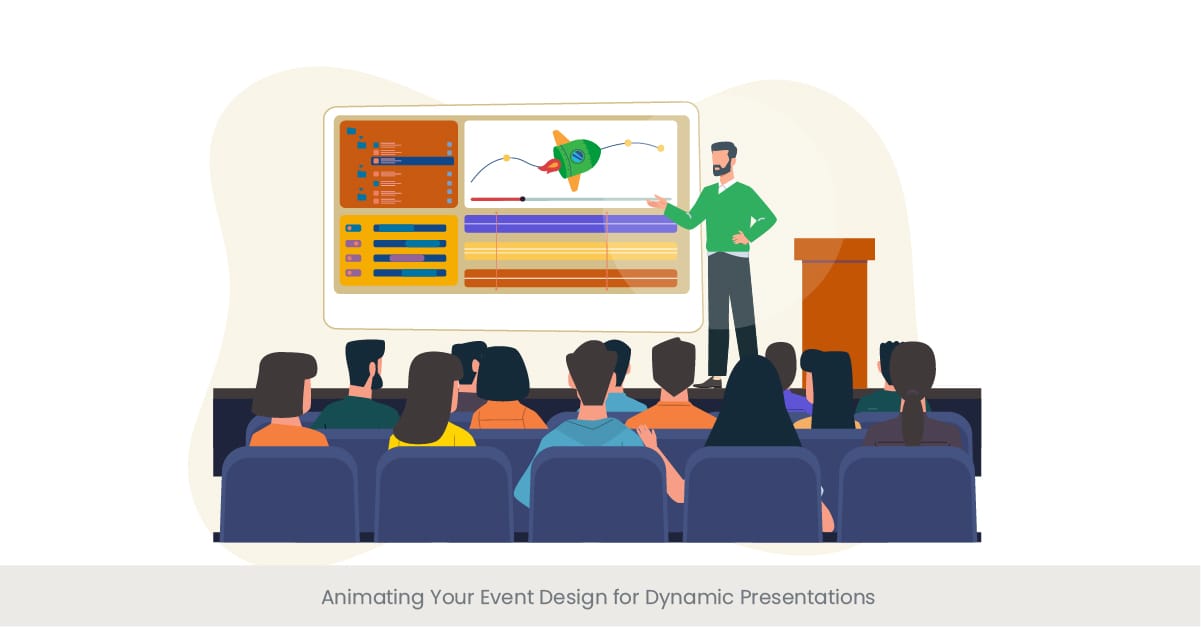

%20(1).jpg)
%20(1).jpg)


